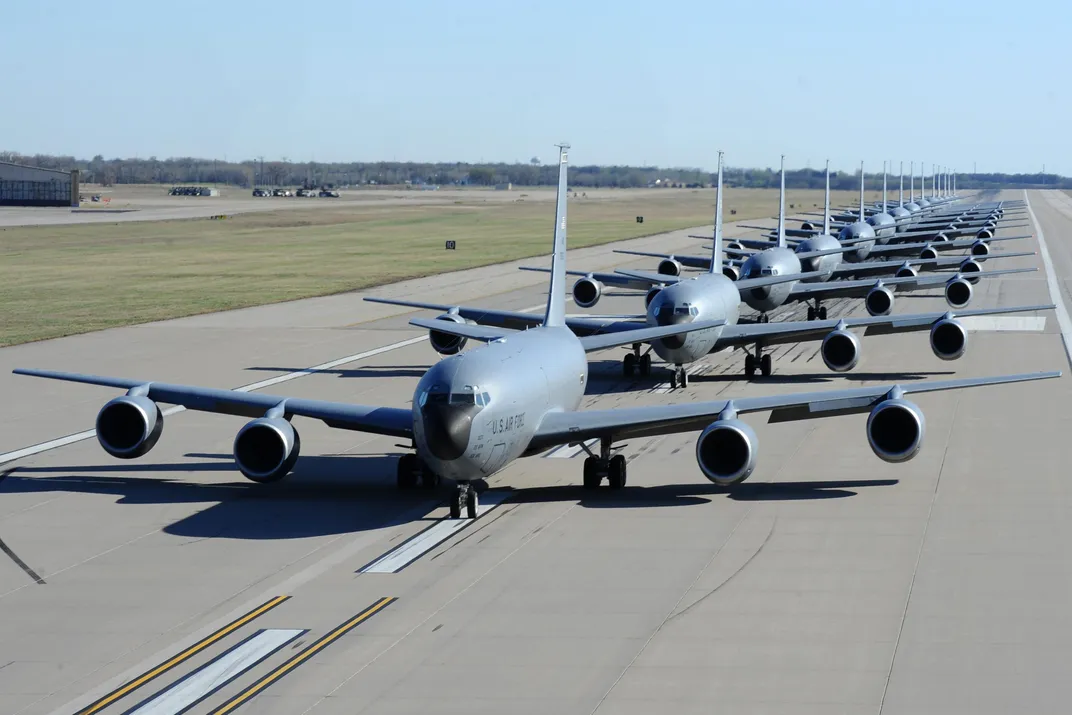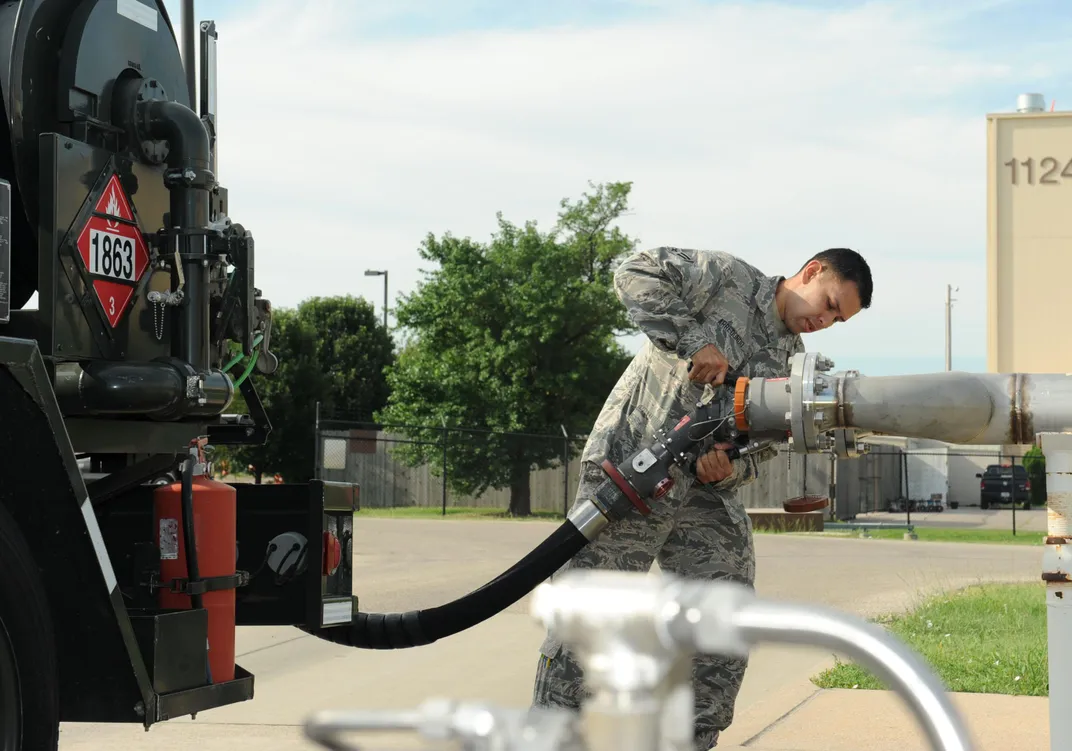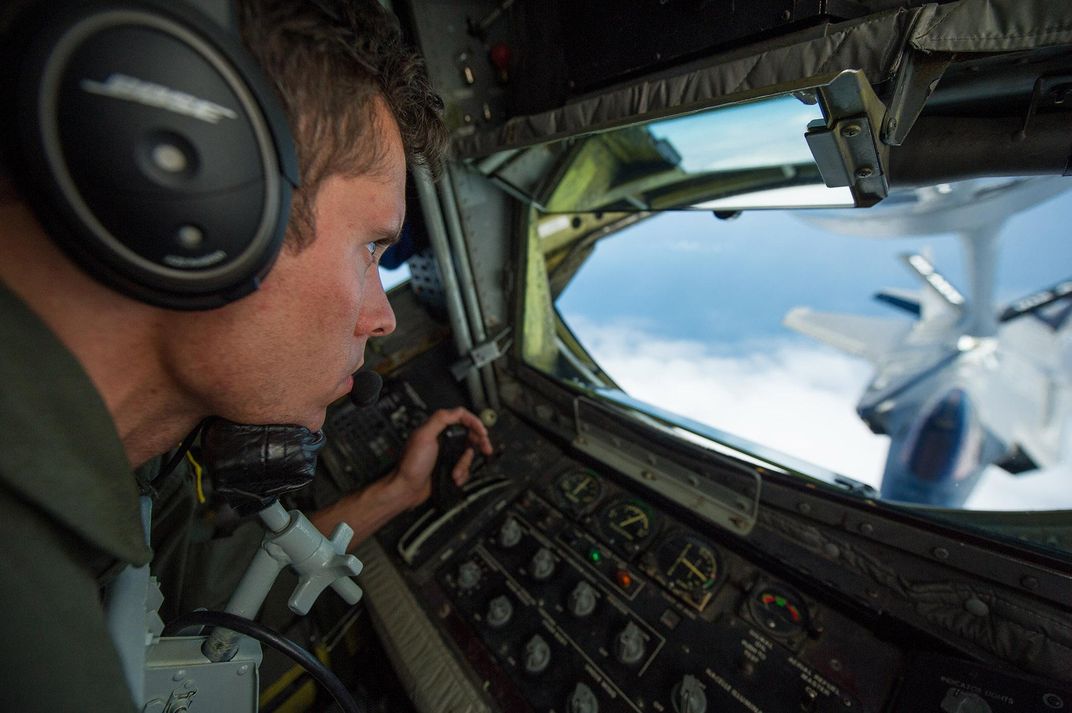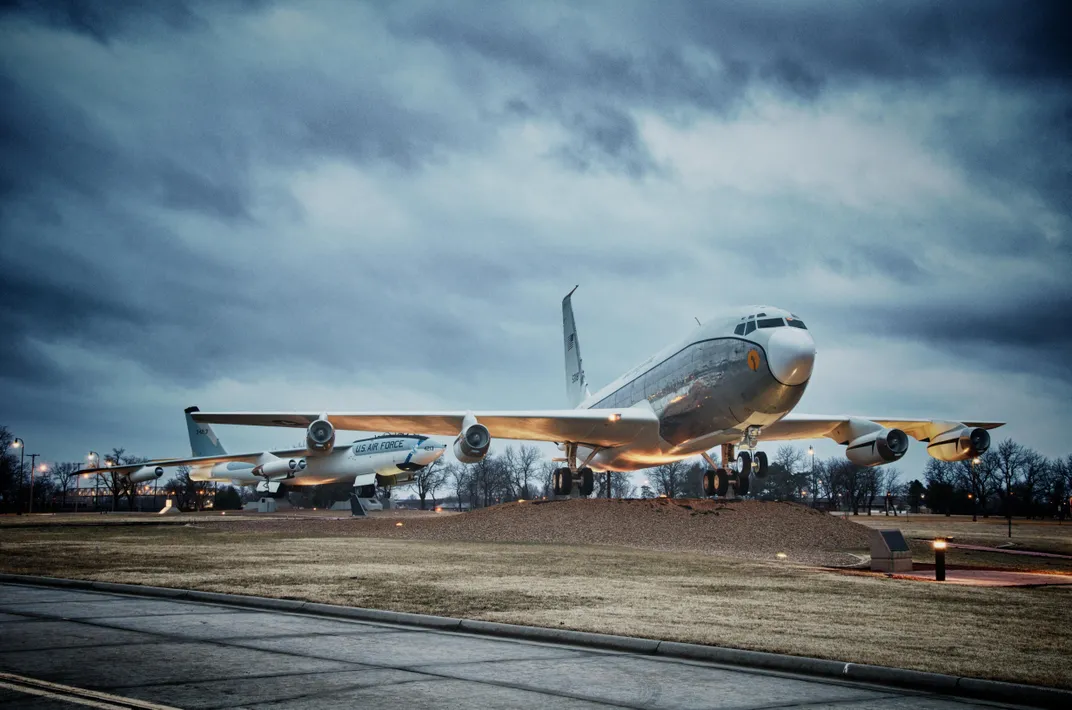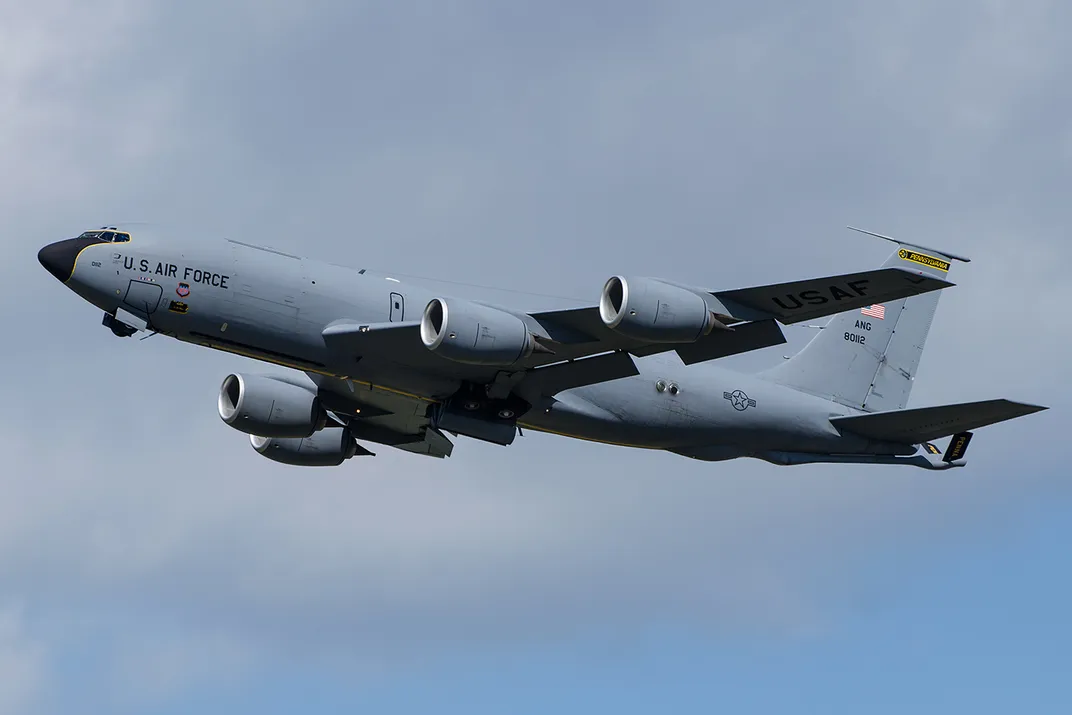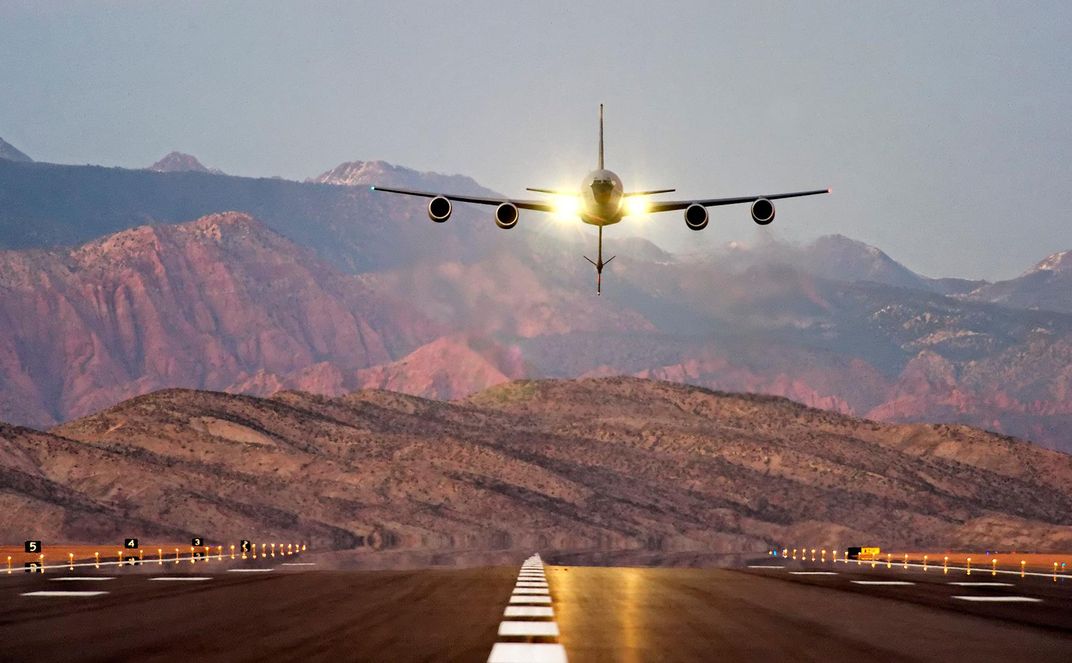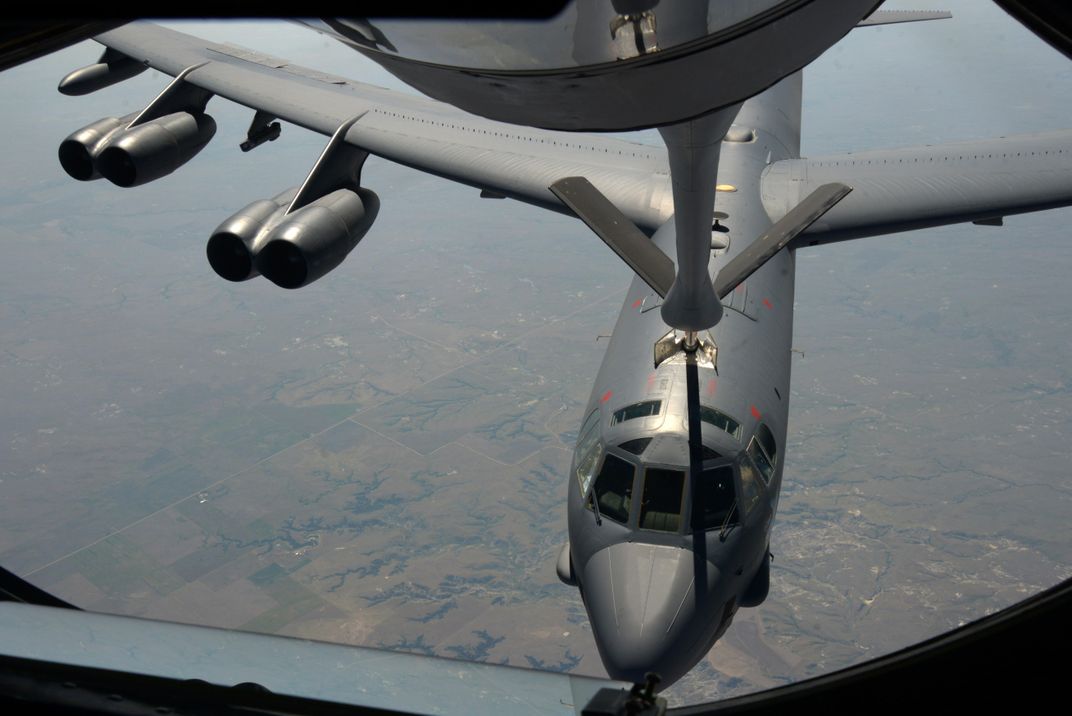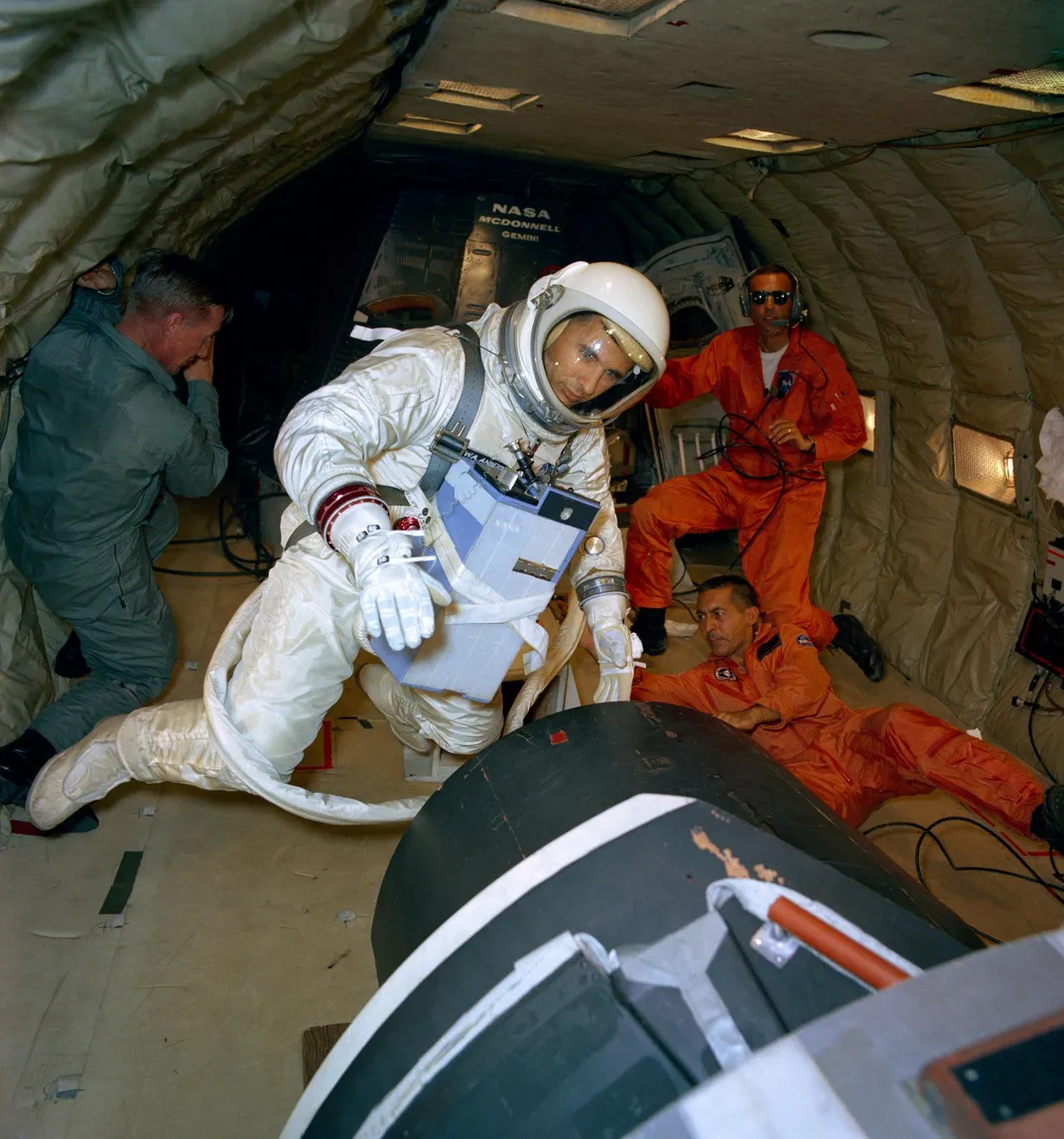The Stratotanker Turns 60
The KC-135 aerial refueling aircraft made its first flight on August 31, 1956.
If you were to name the inventions that gave the U.S. Air Force its global reach in the last century, two might come quickly to mind: the “flying boom”—a hose-like system for refueling airplanes in flight, invented by Boeing engineer Cliff Leisy and two Air Force generals in 1948—and another Boeing product, the KC-135 Stratotanker, which made its debut on August 31, 1956. Essentially a military version of the Boeing 707 passenger jet, the KC-135 doubled the fuel capacity of the KC-97 tankers it replaced, and flew fast enough to keep up with the B-52 bombers it was built to refuel.
Sixty years later, the Stratotanker is still very much in service as a flying gas station for bomber and fighter aircraft around the world. A total of 820 KC-135s were built from the mid-1950s to the mid-1960s. About half of them are still flying. Over its lifetime the Stratotanker has pumped some 8.67 billion pounds of fuel into more than 600,000 aircraft, and has won a reputation for reliability. “If we’re scheduled to be there, we’re going to be there,” says Col. Bruce “Phil” Heseltine, Jr., Vice Commander of the 22d Air Refueling Wing at McConnell Air Force Base in Kansas, which has 55 KC-135s, more than any other base.
A Stratotanker pilot himself, Heseltine says that aerial refueling “can be a very docile event, very pretty to watch.” But add in some air turbulence at nighttime, with tired crews on both the tanker and the “receiver” aircraft, and fueling can become very “sporty,” he says. Still, accidents are rare, which he chalks up to the skill and dedication of the crews.
Although the KC-135 is due to be replaced eventually by the KC-46, the Air Force plans to keep flying the Stratotanker. At an anniversary ceremony today at McConnell, the 22nd ARW’s commander, Col. Albert Miller, joked about the 60-year-old tanker, “While this is not your grandfather’s Air Force, this is your grandfather’s aircraft.” In some other context it might have sounded like an insult, but he said it with evident pride.
/https://tf-cmsv2-smithsonianmag-media.s3.amazonaws.com/filer/03/21/03211229-73a7-4fef-813d-a718ab5bfc22/kc-135_01_w_f-16s_090407-f-6286f-589.jpg)

